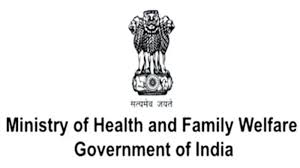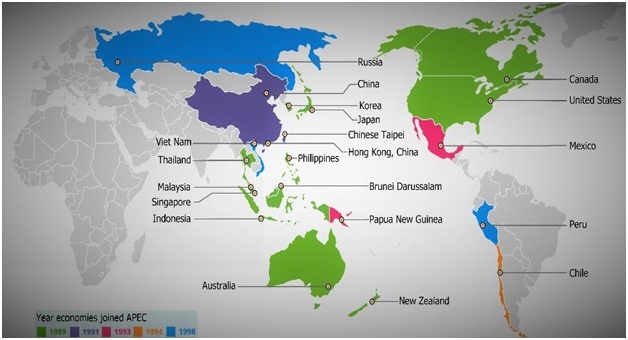DRAFT GUIDELINES ON PASSIVE EUTHANASIA IN INDIA

- 30 Sep 2024
Introduction
The Union Health Ministry of India has released new draft guidelines regarding passive euthanasia, aiming to address the complexities surrounding the withdrawal of life support for terminally ill patients. This move is significant, as it provides clarity for both medical professionals and patients regarding end-of-life care. The guidelines represent an effort to bridge the existing regulatory gap, ensuring ethical practices in sensitive medical decisions.
Understanding Euthanasia
Definition and Types
Euthanasia refers to the practice of intentionally ending a patient's life to alleviate suffering. The term originates from Greek, meaning "good death." Euthanasia can be categorized into several types:
- Active Euthanasia: Actively causing death, such as administering a lethal injection.
- Passive Euthanasia: Withholding life-sustaining treatments, allowing death to occur naturally.
- Voluntary Euthanasia: Conducted with the patient’s consent.
- Involuntary Euthanasia: Performed without patient consent, often in cases where the patient’s wishes are unknown.
Legal Context
While active euthanasia remains illegal in India, passive euthanasia was legalized by the Supreme Court in March 2018. This legal framework allows for the withdrawal of life support under specific circumstances.
Key Provisions of the Draft Guidelines
Conditions for Withdrawal of Life Support
The guidelines stipulate four critical conditions under which life support may be withdrawn:
- Brainstem Death: The patient must be declared brainstem dead as per the Transplantation of Human Organs and Tissues Act (THOA) of 1994.
- Medical Prognosis: The patient's condition must be advanced, indicating that aggressive therapeutic interventions are unlikely to yield benefits.
- Informed Refusal: The patient or their surrogate must document an informed refusal of continued life support following an understanding of the prognosis.
- Legal Compliance: Procedures must align with the legal principles established by the Supreme Court.
Decision-Making Process
The decision to withdraw life support requires a multi-tiered approach:
- Primary Medical Board (PMB): A group of at least three physicians must reach a consensus and explain the medical situation to the patient’s surrogate.
- Secondary Medical Board (SMB): A further validation by another set of three physicians, including one appointed by the district’s Chief Medical Officer, is necessary to confirm the PMB’s decision.
Advance Medical Directives
The guidelines emphasize the importance of advance medical directives, allowing individuals to document their healthcare preferences in case they lose decision-making capacity.
Ethical Considerations
Concerns from the Medical Community
While the guidelines aim to provide clarity, there are concerns regarding the legal scrutiny that doctors may face. The Indian Medical Association (IMA) has raised issues about the potential for undue stress on medical professionals, who historically have made these decisions in good faith without formal guidelines. They argue that placing such decisions within a regulatory framework might misinterpret standard medical practices.
Patient Autonomy and Dignity
The guidelines uphold the fundamental rights to autonomy, privacy, and dignity. Patients capable of making healthcare decisions can refuse life-sustaining treatments, even if such refusals may lead to death. The emphasis on informed decision-making seeks to ensure that patients can navigate their end-of-life choices with dignity.
Implications for Policy and Practice
Need for Stakeholder Feedback
The Health Ministry has solicited feedback from stakeholders, including healthcare professionals and the public, by October 20, 2024. This participatory approach aims to refine the guidelines and address any concerns regarding their implementation.
Balancing Ethical and Practical Considerations
The draft guidelines represent a significant step towards formalizing the process of passive euthanasia in India. They attempt to balance ethical considerations surrounding patient autonomy with the practical realities faced by healthcare providers.
Conclusion
The introduction of draft guidelines on passive euthanasia marks a pivotal moment in India's healthcare landscape. By clarifying the legal and ethical frameworks surrounding end-of-life decisions, these guidelines aim to enhance the dignity of terminally ill patients while providing essential support to healthcare professionals. The ongoing discourse surrounding these guidelines will be crucial in shaping their final form and ensuring their alignment with societal values and ethical norms.
What Is Asia-Pacific Economic Cooperation (APEC) And Why India Is Not A Member (Live Mint)

- 16 Nov 2023
Why is it in the News?
Union Minister Piyush Goyal is attending the Asia-Pacific Economic Cooperation meeting in the United States today, which will also see US President Joe Biden and his Chinese counterpart Xi Jinping hold their second in-person dialogue since Mr. Biden assumed office in 2021, amid tensions and a trust deficit between the two countries.
What is Asia Pacific Economic Cooperation (APEC)?
- The Asia-Pacific Economic Co-operation (APEC) is a regional economic forum and was formed in 1989.
- It is a grouping of economies around the Pacific Ocean that aims to promote trade, investment, and economic development in the region.
- The bloc is looking to “leverage the growing interdependence of the Asia-Pacific and create greater prosperity for the people of the region through regional economic integration”.
- APEC started with 12 members in 1989 but has over the years grown to 21, which includes the US, China, Russia, Japan, and Australia.
- The other members include Brunei, Hong Kong, New Zealand, Papua New Guinea, the Philippines, Indonesia, South Korea, Canada, Mexico, Peru, Chile, Malaysia, Vietnam, Singapore, Thailand and Taiwan.
- Taiwan and Hong Kong, which China stakes claim to as its territory, participate separately in the forum.
- APEC accounts for about 62 percent of global GDP and almost half of global trade and around 2.9 billion citizens.
- As of 2018, they represented 48 percent of global trade.
- It operates based on non-binding commitments with decisions reached by consensus and commitments undertaken voluntarily.
Why is India not a member of the APEC Group?
- India attempted to join APEC in 1991, the year the Indian economy was liberalised.
- A majority of the members of the grouping were in favour of India’s inclusion but some opposed it.
- They had reservations about India’s “protectionist instincts” and cited its records on the economic reforms.
- There was also a freeze on membership since 1997.
- However, it was not extended in 2012.
- In 2016, then Union Minister for Commerce and Industry Nirmala Sitharaman told Parliament that the request to join was based on India’s geographical location, the potential size of the economy, and the degree of trade interaction with the Asia-Pacific.
- India remains an observer of APEC and has been expanding trade and investment ties in the region since the 2000s.
- Among other factors, India’s lack of a Pacific coastline has worked against its membership in APEC, but the Indo-Pacific Economic Framework for Prosperity (IPEF) is clearly meant to give India a more central position, given the US focus on creating alternatives and counterweights to China’s economic influence.
How can India benefit from APEC membership?
- “Becoming an APEC member would bring several benefits for India, such as promoting closer economic relations, facilitating trade and investment flows, and opening market access to major economies.
- Aligning with APEC by simplifying and harmonizing trade procedures and regulations could boost India’s exports, attract foreign direct investment, and support domestic initiatives like ‘Make in India‘.
- A membership could encourage the country to “adopt best practices, streamline trade processes and reduce transaction costs”.
- It could facilitate “technology transfer” in important areas like information technology, pharmaceuticals, biotechnology, renewable energy and manufacturing.
- The membership will be helpful for improving flows of knowledge, capital, and goods within the region through better coordination of policies.
- Economies such as Japan and South Korea (members of both APEC and IPEF) are also important for India in terms of the technological and production know-how they can provide, as is Taiwan, which is only a member of APEC.
What is the Significance of APEC?
- Since its formation, the grouping championed the lowering of trade tariffs, free trade, and economic liberalisation.
- As per the US State Department, “During its first five years of operation, APEC established its core objectives.
- In the 1991 Seoul Declaration, APEC member economies proclaimed the creation of a liberalised free trade area around the Pacific Rim as the principle objective of the organisation.”
- The experts at the think tank Centre for Strategic and International Studies (CSIS), stated, “The dynamic growth attributable to APEC initiatives contributed significantly to the development of a growing middle class in the developing Asia-Pacific region.
Conclusion
India must independently pursue trade liberalization, excluding China to ease concerns. Multilateral coordination, more efficient than bilateral deals, is crucial. Empirical evidence emphasizes the clear positive impact of trade liberalization on Indian economic growth, surpassing other policy reforms. India's anxieties about trade openness may impede growth.
Engagement in institutions such as APEC and IPEF provides a platform for addressing and isolating these concerns. India's focused approach to trade liberalization is pivotal for navigating economic complexities and fostering meaningful international collaborations.
